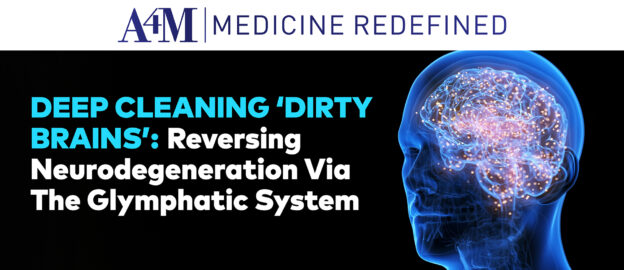Neurodegenerative diseases, with Alzheimer’s disease (AD) at the forefront, pose a formidable challenge to global health. Affecting between 5% and 7% of the population in their lifetime, AD stands as one of the most devastating neurological conditions. In the absence of disease-modifying treatments, researchers have intensified their efforts to explore novel approaches to combat these illnesses.
Recent neuroscientific advancements have shed light on the critical role of the glymphatic system in maintaining brain health and potentially preventing conditions such as Alzheimer’s and Parkinson’s disease (PD).
The Glymphatic System: A Breakthrough in Neuroscience
First described by Nedergaard and colleagues in 2012, the glymphatic system has revolutionized our understanding of brain waste clearance. This intricate network serves as the central nervous system’s unique waste removal process, utilizing cerebrospinal fluid (CSF) to eliminate excess proteins generated by neuronal activity.
Several key components comprise the glymphatic system. Glial cells support and protect neurons while facilitating CSF flow through the brain parenchyma. The perivascular space, consisting of narrow channels surrounding brain blood vessels, serves as a conduit for CSF flow. Additionally, aquaporin-4 (AQP4) water channels, expressed on astrocytic endfeet, facilitate rapid water movement between CSF and interstitial fluid.
The system’s primary activity occurs during periods of rest, particularly sleep. As glial cells shrink, the interstitial space expands, enhancing CSF flow through perivascular spaces. This process facilitates the clearance of metabolic waste products, including beta-amyloid and tau proteins implicated in neurodegenerative diseases.
Glymphatic Dysfunction in Neurodegenerative Diseases
While the glymphatic system efficiently removes toxic proteins in healthy, young brains, aging and certain pathological conditions can impair this crucial clearance mechanism.
Alzheimer’s is characterized by the formation of amyloid-beta (Aβ) plaques and the accumulation of neurofibrillary tangles (NFTs) composed of hyperphosphorylated tau protein. Glymphatic dysfunction in AD leads to reduced clearance of these proteins, potentially contributing to disease initiation and progression. Moreover, the overactivation of microglia in AD increases neurotoxin and inflammatory factor secretion, potentially exacerbating glymphatic dysfunction.
In Parkinson’s disease, the accumulation of alpha-synuclein protein is a hallmark pathological feature. Impaired glymphatic clearance of alpha-synuclein may contribute to disease progression. Additionally, sleep disturbances common in PD may further compromise glymphatic function, creating a detrimental cycle.
Deep Cleaning The Brain: Groundbreaking Research in Glymphatic System Restoration
A recent study from the University of Rochester Medical Center has demonstrated the potential to restore glymphatic function in aging mice, offering promising avenues for treating neurodegenerative diseases.
The research uncovered significant age-related changes in glymphatic function. These include decreased frequency of cervical lymph vessel contractions, valve failure in lymphatic vessels, and a 63% reduction in CSF outflow speed in older mice compared to younger counterparts.
Notably, the study identified a potential therapeutic intervention: prostaglandin F2α. This hormone-mimicking drug, typically used for inducing labor, was found to promote smooth muscle contraction in lymphatic vessels. When administered to older mice, it increased the frequency of lymphatic contractions and CSF outflow, effectively restoring function to levels observed in younger animals.
These findings suggest possible clinical applications, including the use of prostaglandin F2α or similar compounds to enhance glymphatic function in humans, potentially offering a novel strategy for preventing or treating neurodegenerative diseases.
Clinical Implications and Future Horizons
The growing understanding of the glymphatic system’s role in neurodegeneration has significant implications for clinical practice and research.
Potential applications include developing diagnostic tools to assess glymphatic function in vivo, serving as early biomarkers for neurodegenerative risk. Therapeutic strategies may involve pharmacological interventions targeting glymphatic enhancement, such as prostaglandin F2α analogs. Non-pharmacological approaches, including lifestyle interventions to promote glymphatic function, may also play a crucial role.
In preventive medicine, incorporating glymphatic health assessments into routine neurological examinations could prove valuable. Developing preventive strategies targeting glymphatic function in at-risk populations may offer a new paradigm in neurodegenerative disease prevention.
Future research should focus on elucidating the molecular mechanisms regulating glymphatic function, investigating potential synergistic therapies combining glymphatic enhancement with existing treatments, and conducting long-term studies to assess the impact of glymphatic-targeted interventions on neurodegenerative disease progression.
Embracing a New Era in Neurodegeneration Management
Recent breakthroughs in glymphatic system research have opened novel avenues for understanding and potentially treating neurodegenerative disorders. As research progresses and our understanding deepens, the potential for innovative strategies to prevent, manage, and possibly reverse conditions such as Alzheimer’s and Parkinson’s disease becomes increasingly promising. The encouraging results of prostaglandin F2α in animal models mark just the beginning of a new frontier in therapeutic approaches.
While robust clinical evidence is still required to validate the benefits of glymphatic system modulation in at-risk or diagnosed patients, the implications of this research are profound. This evolving understanding of the glymphatic system not only offers hope for millions affected by neurodegenerative disorders but also challenges the scientific and medical communities to redefine the boundaries of neurological health and longevity.

